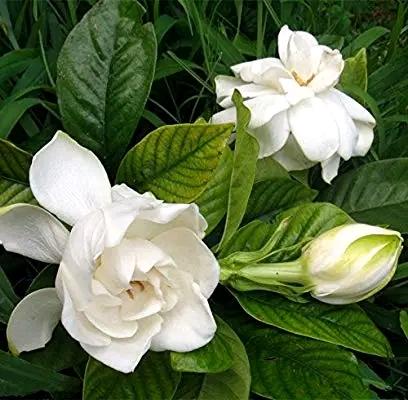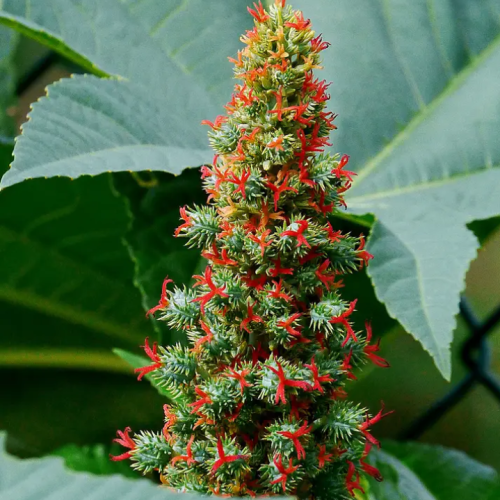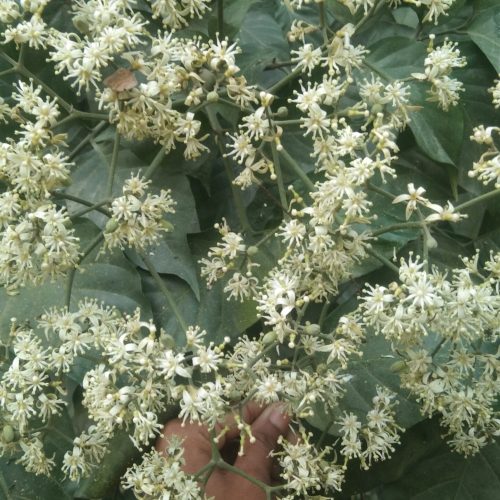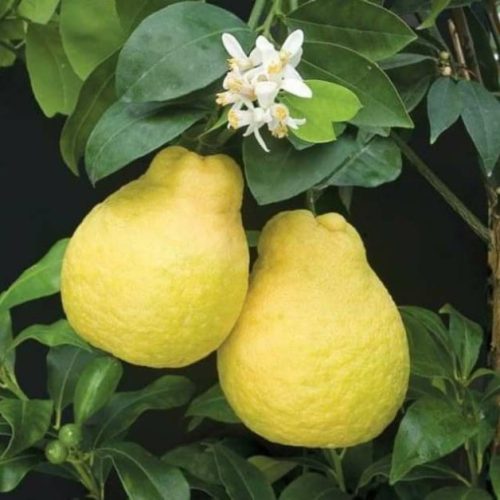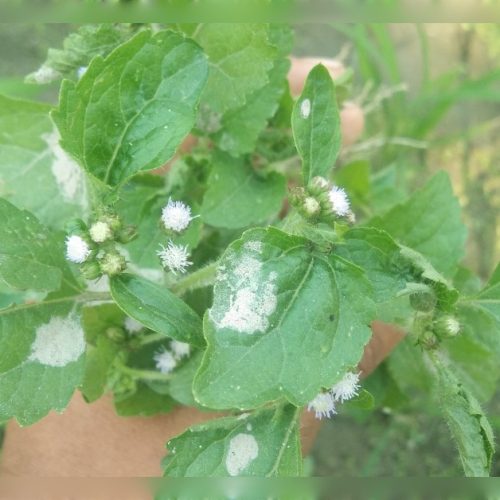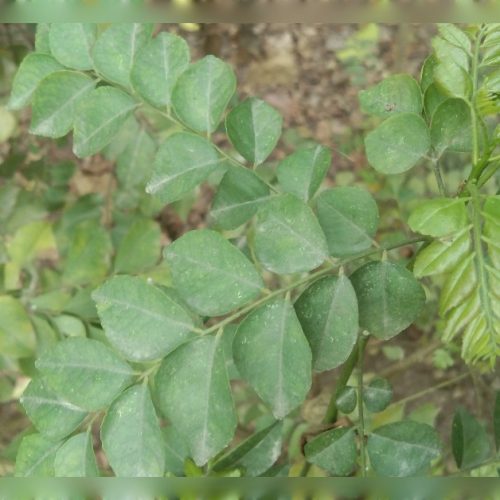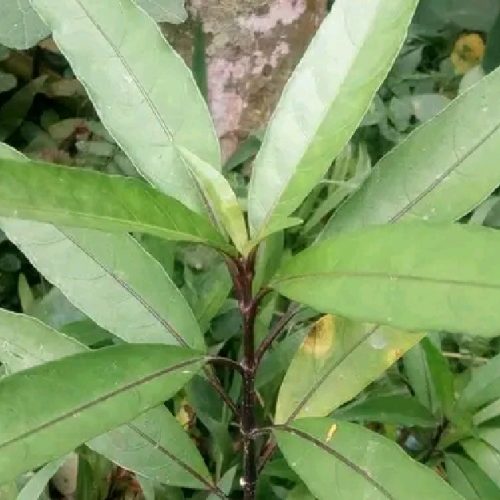Table of this Contents
ToggleGardenia jasminoides | Cape jasmine.
Most people in Asian continent love gardenia. This flower grows in the garden or in the forest, big white flowers, the smell of the flowers can be felt from far away. It is used to make things like lotions and candles. Do you know, Gardenia jasminoides roots and leaves also have a long history of use in traditional Chinese medicine.
Gardenia jasminoides.
Gardenia jasminoides. Cape jasmine. Gardenia plants are members of the Rubiaceae plant family. This flower is popular in several parts of Asia and the Pacific Islands, including China and Japan.
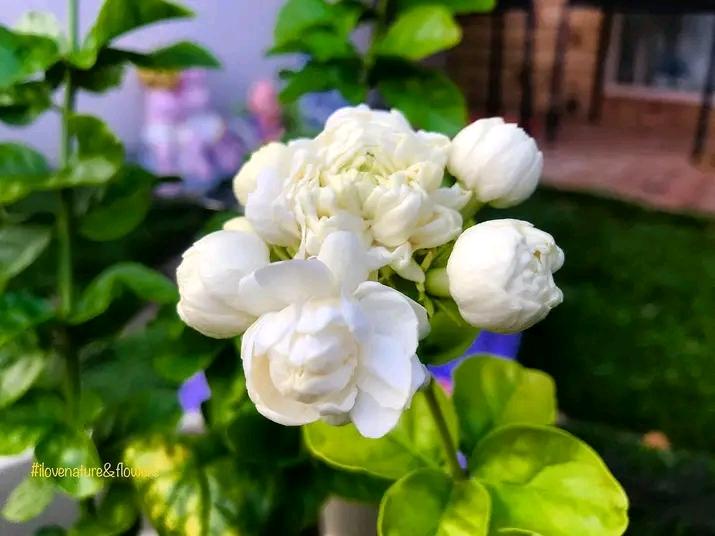
Currently ethanol extracts of gardenia fruits and flowers are used in various ways in herbal medicine and aromatherapy. There are over 250 different types of gardenia plants, one of which is called Gardenia jasminoides Ellis. which is primarily used to make essential oils.
Gardenia jasminoides has numerous uses including use as a natural antibacterial, analgesic, antifungal, diuretic, antiseptic, detoxifying and antispasmodic.
Gardenia jasminoides is used to treat wounds on the body. Drink gardenia tea to improve digestion.
Gardenia jasminoides is best in fragrance hence its name Cape jasmine. and Gardenia jasminoides is a very familiar flower to Americans. Although its original habitat is China and Japan. Cape jasmine is a flowering plant belonging to the Gardenia genus of the Rubiaceae family.
Cape jasmine is widely known for its immense fragrance and decorative applications. It is used as a shrub, creeper and hedge plant in landscapes. Gandharaj is one of the most popular flowers in India. Commonly used in India to worship Lord Shiva and other deities.
Gardenia jasminoides is used to offer modesty, sensuality, friendship and love. Myrrh represents gratitude and good luck, while jasmine used in religious ceremonies represents purity.
Hinduism has a tradition of worshiping jasmine flowers where:
1 or 9 jasmine flowers should be offered to Goddess Durga.
10 flowers of Rajnigandha should be offered to Lord Shiva.
4 Jai flowers should be offered to Lord Rama.
5 jasmine flowers should be offered to Lord Hanuman.
Gardenia jasminoides or Cape jasmine are used on Hinduism trading or Puja.
Naming of the Cape jasmine.
The English name of Cape jasmine flower is named after a famous American naturalist Dr. Alexander Garden (1713 – 1791). The English name of the flower is gardenia.
Birth and Species:
Cape jasmine family Rubiaceae. The wild plant is found in South Africa, India and China. There are a total of 250 species of myrrh.
The technique of propagation of this plant is very simple. If the branches are cut and buried in the ground, new seedlings will grow from the branches. The tree starts to flower when the tree is only two years old. This is how the plant spreads everywhere. The smell of this flower is very unique.
The intoxicating aroma wafts through the summer air. The intensity of the smell increases especially in the darkness of night. Cape jasmine is the most popular flower in the village due to its availability, profusion of flowers and long lasting fragrance. The tree is appreciated everywhere for its structure and the fragrance of its flowers.
Features:
The main characteristic of yellow Cape jasmine is that three color changes can be observed in one flower. These flowers are white in the evening, yellow in the morning and ocher in the afternoon.
The fragrance of white Cape jasmine flowers remains long after they have dried. Like yellow Cape jasmine and white Cape jasmine, these flowers bloom profusely. But like white Cape jasmine, this myrrh bud does not fall.
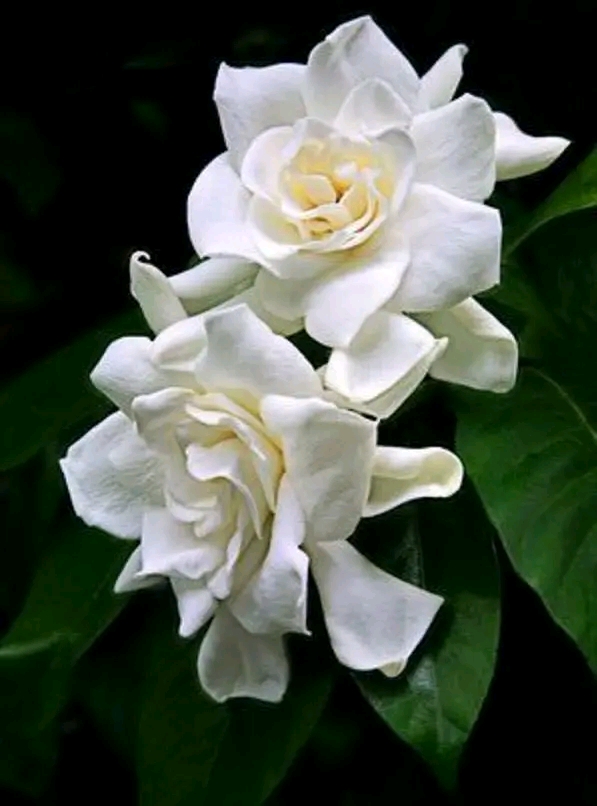
Growing Gardenia jasminoides in tubs:
Tub selection:
Eight/ten/twelve inch tubs are required for this plant. The bigger the tub in size, the better.
Soil Management:
This plant needs well-drained loam or clay soil. Clay soil is best for this plant. It requires two parts clayey soil or garden soil (whatever soil you have at hand), one part vermicompost or one year old rotted dung manure or leaf-rot manure and one part cocopeat or wood powder or rice husk (to retain soil moisture). Add half a teaspoon of phosphate for an eight-inch tub and one teaspoon of phosphate for a ten- or twelve-inch tub.
Vermicompost or cow dung manure or leaf-rot manure is not available, but can be applied in normal soil.
Height:
This tree grows naturally. This bush grows up to 1.8 m, but at home does not exceed 45-50 cm of its height. This plant has broadly glossy leaves. Flowers solitary or collected in a gabled inflorescence of 4-6 pieces. Fragrant white flowers up to 5-7 cm in diameter.
Care of the Gardenia jasminoides | Cape jasmine:
Use well-draining potting mix and keep it moist.
This is a sun loving plant, keep it in full sunlight.
Water daily in summer and moderately in winter.
Avoid overwatering, as this can cause yellowing of leaves and rotting of roots.
Slope pruning is necessary every 10 days as flowering slows down, this helps to keep the plant blooming.
Fertilize with low nitrogen NPK every month for better flowering.
It prefers warm environment and grows rapidly between 16 – 32 C temperature.
Cape jasmine flowers should be watered frequently – one day. Water should be spayed 2 times. Also home Cape jasmine care requires removing faded flowers.
The normal flower production of Gardenia jasminoides is disturbed if the excessive heat of the sun and excessive cold. So care should be taken not to overheat and cold.
Lighting Management:
This plant loves the sun. So if you want to get a lot of flowers, this plant should be kept in direct sunlight. 6 hours a day should be kept in the sun.
Water Management:
This plant likes moisture. So water should be given in such a way that soil moisture is always maintained. The soil should never remain wet. Excessive waterlogging is likely to kill the tree.
Fertilizer and pesticides Management:
In the first three months, organic fertilizer should be given every three days along with one spoon of phosphate. After that, compost or a handful of mustard powder, one teaspoon of potash and one teaspoon of phosphate should be mixed together.
Temperature.
Temperature of at least 16 ° C and more than 22 ° C. Best kept at around 18°C.
what do you do:
Each plant has different light, food and water requirements.
Most plants in the environment prefer moderate watering,
Before watering Gardenia jasminoides, allow a few inches of soil to dry out. Gardenia jasminoides plants with fertilizers and pesticides in early spring will produce more flowers in spring. Repot the plant into a slightly larger pot every two years.
What not to do:
Avoid frequent watering in winter, it will kill the plant.
Avoid changing extra places. Like suddenly taking the tub indoors or outdoors.
Avoid partial watering and use a water sprayer to water evenly in all directions.
Avoid repotting plants in large containers, most plants like to be grouped.
Avoid over fertilization, the amount depends on the NPK content but the plant does not need more than a spoonful.
General understanding:
For plants, living organisms that require a little sensitivity, the following general guidelines are outlined:
For small seedlings, dig 2-3′ deep around the root zone with your fingers and water again when the soil feels dry to the touch.
Use balanced fertilizers such as 10-10-10, 14-14-14 (nitrogen (N), phosphorus (P) and potassium (K)) micro-nutrient foods.
Watch for changes in plant vigor and growth, if plants become weak, contact a doctor quickly.
Regularly inspect the tree’s progress and keep yourself alert at all times.
Occasional pruning is necessary for tree health and aesthetics. Remove unnecessary branches as soon as you notice them.
1. What is Gardenia jasminoides plant?
It is a popular flowering plant among Americans. They are prized for their fragrant white flowers and glossy, dark green leaves. Fall or spring is the best time to plant gardenia shrubs. They tend to grow up to 5-6 feet in height with a similar spread.
2. How to care for your Gardenia jasminoides plant?
This plant does not require much care, fertilizers, pesticides. This plant should be watered only when the base of the plant is dry. It needs at least 3-6 hours of morning sunlight and natural indirect bright light for the rest of the day to grow well once a day. It requires a well-drained and well-aerated fertile soil rich in organic matter. Leaf drop and yellowing of leaves are signs of overwatering. Cut off damaged leaves to encourage new growth.
Irrigation:
Irrigation should be given 3 times a day in summer and once in 2 days in winter. If the root of the tree is wet during the rainy season, irrigation is not needed.
When watering, the water should be poured slowly at the base of the plant. The roots of the tree are damaged if water is poured from too high at the base of the tree. It disrupts normal flower production.
The soil:
Care includes a mandatory transfer of Cape jasmine, which is preferably carried out in the spring every two years. Cape jasmine flowers need acidic soil with a PH of 5.5 – 4.5. The soil mixture for this plant is divided into five equal parts: grass clippings, conifers, leaves, peat and sand. It is necessary to have good drainage, especially expanded clay, which is poured into the bottom of the pot. If you have not prepared your own soil mixture, you can buy soil for azaleas at a flower shop.
Planting:
Gandharaj flower propagated by cuttings of newspaper in February – March. Rooting of cuttings in warm water at 25-27 degrees C, they are placed in a weak solution of rooting stimulants (kornevin, epin or IAA).
Diseases and pests:
These plants are generally not affected by any disease. However, if water sits at the base of the tree, the tree may die. If we routinely spray this plant every 7 days with the same insecticides and fungicides that we use for all other plants in the garden while spraying other plants, there will never be any disease or insect attacks.
Gardenia Benefits and Uses.
Some of the many uses of gardenia plants and essential oils include:
Fights free radical damage and tumor formation, thanks to its antiangiogenic activity (3).
Infections including urinary tract and bladder infections
Insulin resistance, glucose intolerance, obesity, and other risk factors are associated with diabetes and heart disease.
Acid reflux, vomiting, gas IBS and other digestive problems
Depression and anxiety
Fatigue and brain fog
abscess
Muscle spasms
fever
Menstrual pain
headache
low libido
Poor milk production in nursing women
Slow healing wounds
Liver damage, liver disease and jaundice
Blood in the urine or bloody stools
Which active compounds are responsible for the beneficial effects of gardenia extract?
Studies have shown that gardenia contains at least 20 active compounds, including several powerful antioxidants. Some of the compounds isolated from the edible flowers of wild Gardenia jasminoides J. Allis include benzyl and phenyl acetates, linalool, terpineol, ursolic acid, rutin, stigmasterol, crocineridoids (including coumarolshanziside, butynolganziside and malecoside, gardenside B and geniposide).
What are the uses of gardenia? Below are the many medicinal benefits of flowers, extracts and essential oils:
Helps fight against inflammatory diseases and obesity.
Gardenia essential oil contains many antioxidants that fight free radical damage, plus geniposide and genipin, two compounds that show anti-inflammatory action. It has also been found to help reduce high cholesterol, insulin resistance, glucose intolerance, liver damage, potentially offering some protection against diabetes, heart disease and liver disease.
Some studies have found evidence that gardenia jasminoid may be effective in reducing obesity, especially when combined with exercise and a healthy diet. According to a 2014 study published in the Journal of Exercise Nutrition and Biochemistry, “Geniposide, one of the main components of Gardenia jasminoides, is known to be effective in preventing body weight gain as well as improving abnormal lipid levels, high insulin levels, poor glucose. intolerance, and insulin resistance.
May help reduce depression and anxiety.
The scent of gardenia flowers is known to promote relaxation and help those experiencing traumatic stress. In traditional Chinese medicine, gardenia is included in aromatherapy and herbal formulas used to treat mood disorders, including depression, anxiety, and restlessness. A study from Nanjing University of Chinese Medicine published in Evidence-Based Complementary and Alternative Medicine found that the extract (Gardenia jasminoides alys) exhibited rapid antidepressant effects through immediate enhancement of brain-derived neurotrophic factor (BDNF) expression in the limbic system. the “emotional center” of the brain). Antidepressant response begins approximately two hours after administration.
Helps to soothe the digestive system.
Components isolated from Gardenia jasminoides, including ursolic acid and genipin, have antigastric activity, antioxidant activity, and acid-neutralizing ability that protect against gastrointestinal problems. For example, research conducted at the Plant Resources Research Institute of Deoksung Women’s University in Seoul, Korea, and published in Food and Chemical Toxicology, found that genipin and ursolic acid may be effective in the treatment and/or prevention of gastritis, acid reflux, and ulcers. Wounds and infections caused by H pylori activity.
Genipin has also been shown to aid in fat digestion by increasing the production of certain enzymes. According to research published in the Journal of Agricultural and Food Chemistry and conducted at Nanjing Agricultural University’s College of Food Science and Technology and Laboratory of Electron, it appears to support other digestive processes in a gastrointestinal environment, even an “unstable” pH balanced gastrointestinal environment. Microscopy in China.
Fights infection and protects against wounds.
Gardenia jasminoides | Cape jasmine contains many natural antibacterial, antioxidant and antiviral compounds. To combat colds, respiratory/sinus infections, and congestion, try inhaling gardenia essential oil, rubbing it on your chest, or using some in a diffuser or face steamer.
A small amount of essential oil(Gardenia jasminoides | Cape jasmine) can be mixed with a carrier oil and applied to the skin to fight infection and promote healing. Simply mix the oil with coconut oil and apply to a bruise, scratch, scrape, bruise or cut (always dilute essential oils first).
May help reduce fatigue and pain (headaches, cramps, etc.)
Gardenia extract, oil, and tea are used to combat aches, pains, and discomfort associated with injuries, including headaches, PMS, arthritis, sprains, and muscle cramps. It has some stimulant properties that can even help lift your mood and improve cognition. It has been found to improve circulation, reduce inflammation, and help deliver more oxygen and nutrients to areas of the body that need healing. For this reason, it was traditionally given to people struggling with chronic pain, fatigue, and various ailments.
An animal study from Weifang People’s Hospital Department of Spine Surgery and Department of Neurology in China appears to verify the pain-reducing effects. When the researchers administered ozone and gardenside, a compound of gari fruit, “the results demonstrated that treatment with a combination of ozone and gardenside increased the mechanical withdrawal threshold and thermal withdrawal latency, thus confirming their pain-relieving effects.”
May help improve cognition and protect memory.
A study published in the Chinese Journal of Natural Medicine found that gardenia extract helps improve memory, especially in the elderly memory-impaired population, including those with Alzheimer’s disease. In research, the two main components found in gardenia extract, geniposide and gardeninside, help suppress the expression of immune-related genes in the brain, meaning they have anti-inflammatory effects that address the mechanisms underlying memory deficits.
Gardenia jasminoides | Cape jasmine.
How does Cape jasmine compare to other medicinal plants, such as Gardenia jasminoides | Cape jasmine?
Jasmine essential oil is another mood-booster and stress reliever. Like gardenia, jasmine (Jasminum officinale) has been used for centuries in parts of Asia as a natural remedy for depression, anxiety, stress, low libido, and insomnia.
Both have “seductive” qualities, helping to increase sensuality and arousal due to their scent. In fact, jasmine oil has been nicknamed the “Queen of the Night” because of its ability to improve libido and energy.
Cape jasmine oil is believed to have antiviral, antibiotic and antifungal properties. Much like gardenia. Studies have shown that using jasmine can improve mood and reduce both physical and mental symptoms of low energy. It can help fight harmful bacteria and viruses and prevent illness, irritation, fungal and viral infections.
Gardenia jasminoides oil can be inhaled through the nose or applied directly to the skin. It does not need to be combined with a carrier oil and instead is recommended to be used undiluted for best results. Try using jasmine and gardenia together in massage oils or body lotions, body scrubs, homemade soaps and perfumes, and homemade candles.
Gardenia Dosage and Supplements.
Gardenia Essential Oil:
Essential oils are made by extracting the active ingredients found in the volatile acids of plants. Flower petals are usually the source of extract/oil, although leaves and roots can also be used.
How is gardenia essential oil used?
It can be diffused around your home, applied topically to the skin when mixed with carrier oils, or added to bath, lotion, body spray and perfume. The oil has a delicate, sweet and herbal aroma. For using the oil on your skin and hair, I recommend combining it with coconut, jojoba, or almond oil to increase absorption and add moisture. To use it to reduce stress, try adding a few drops to your bath or diffusing it throughout your room before bed. For best results and for your safety, I recommend purchasing 100 percent pure organic gardenia essential oil.
Gardenia Supplements/Capsules:
Gardenia jasminoides is considered safe in doses of three to 12 grams taken by mouth daily. Gardenia supplements are available online, although they have not been as extensively researched as the oil. It is common to find product extracts in combination with other herbs/medicinal flowers. The supplements should not be confused with garcinia cambogia supplements, which are used for weight loss and appetite suppression. They are not derived from the same plant and have different effects.
In short, everything about Gardenia jasminoides | Cape jasmine.
Cape jasmine is a very famous flower in Asia. Cape jasmine is a flowering plant belonging to the Gardenia genus in the Rubiaceae family. Its scientific name is Gardenia jasminoides. This flower is also known as Gardenia and Cape Jasmine. The English name of this flower is given after the American naturalist Dr. Alexander Garden (1713 – 1791). The Bengali name obviously refers to its strongly aromatic character.
Cape jasmine is the best in fragrance hence its name Cape jasmine. Gardenia jasminoides is a very familiar flower to all people in our country. But its origin is China.
Shrub-like flowering plant of medium size and height. The leaves are dark green and the flowers are evergreen. The height of the tree can be kept small or large through the process of pruning. It is propagated by stem cuttings.
Flowering plants suitable for direct soil and tub production. Gardenia jasminoides plant blooms in summer and spans the entire summer. Flowers bloom at the tip of the branches of the tree.
The flowers are rose-like in shape. The color is pale white. Gardenia jasminoides flowers are made up of numerous soft petals. Pollen is located in between. The flowers have a sweet and strong fragrance.
Flowers bloom at night, so at night and in the morning, the garden is filled with the scent of flowers. The beauty of flowering plants is quite charming. The production of Gandharaj flower plants in almost every residence, house, office, court premises of our country is a sight to behold.
Apart from this, in many cases many people plant cuttings of gandharaj flower for living fence and beauty growth in the borders of the houses, the planted tree takes a bushy shape and looks beautiful. The stems and branches of the Gardenia jasminoides flower plant are very strong.
Perfumes are prepared from flower extracts. Cape jasmine is a very hardy flowering plant. This flower is produced in almost all types of soil in a sunny environment.
Gardenia (Ananta, Cape jasmine) is a genus of plants(Cape jasmine) characterized by amazingly beautiful fragrant flowers. It is classified under the Oleaceae family and is native to warm-temperate, subtropical and tropical regions of Eurasia, Australia and Oceania. It has about 200 species and most of its bright varieties are found in Southeast Asia. Its name is derived from the Persian word ‘Yasmin’ which means the gift from the Almighty God.
Brief information about the plant presented below:
Gardenia (Eternity, Myrrh)
Height: 6 to 10 inch pots
Medium: Soil mix
Container Type: 6 inch plastic container
Not only that, jasmine flowers make an aromatic attractive addition to the home or garden, it has various medicinal uses, jasmine is an Ayurvedic medicinal plant used to treat wounds, skin diseases, oral cavity ulcers, gingivitis, headaches, wounds. Erectile dysfunction and eye diseases etc. Jasmine oil has anti-depressant, anti-inflammatory, antiseptic, aphrodisiac and sedative properties and is used in the treatment of depression, nervous exhaustion, stress-related conditions and childbirth.
Gardenia jasminoides flowers grow in small pots, reaching a maximum height of 50-60 cm. Nature, trees and 180 cm. The smooth, leathery, shiny, glossy, rich green color of the leaves can either cross. Form elongated, large -. Up to 10 cm of its flower myrrh often collect 5-6 cups of alcoholic flowers (at least – 4). And they are single, but then there are bigger ones like 5 cm or more in circumference. Their pristine white color looks very impressive, majestic, elegant, one might even say regal. Its charm is full of gandharaja flowers, a very fragrant fragrance pleasing to the Lord, appearing in good rooms. Decorate the living room and kitchen, sundeck, and can be warm and like the open balcony or terrace. The classic combination of alcoholic green and snowy white, a certain element of the ceremony allows the use of myrrh flowers for decoration of banquet hall, lobby, office space. This will require a lot of landing power and large species of plants. Flowering occurs during their summer-autumn period.
Gardenia Recipes and How to Grow Gardenia jasminoides | Cape jasmine:
Gardenia plants, the popular species Gardenia jasminoides, are dark green evergreen shrubs that grow year-round in warm climates. Most produce very fragrant white flowers, although the flowers can be yellow, beige or orange depending on the time of year. Plants bloom year-round in warm climates – or in late summer and spring in cooler climates. They grow three to six feet tall and can get quite wide if they have room to spread out.
You can grow a large variety of gardenia plants/shrubs at home and then use the fresh flowers in a variety of ways. Here are tips for growing your own:
What does the Gardenia jasminoides or Cape jasmine need( Sunlight or Shade)?
They prefer to grow in full sun or light shade. They flower best when grown in moist, acidic soil. When growing gardenias it is recommended to use organic soil or organic mulch to get the best results.
When it is very hot and sunny, plants do best when they have at least some shade, otherwise they can overheat. Why is the leaf turning yellow? This is a sign that they are getting “sunburned”.
Because the flowers are bright white with dark green leaves and are very pretty, you can pick them and use them as decorations or leave a row of bushes in the ground to create hedges.
Warning:
Possible side effects associated with the use of gardenia capsules or essential oil may include loss of appetite, diarrhea or loose stools, skin irritation and inflammation, and possible complications in pregnant/nursing women and children.
Although the oil has been used for years to help lactating mothers produce milk, many studies have not proven that it is always safe for pregnant or lactating women. Since not enough is known about the possible effects of gardenia during pregnancy or breastfeeding, use caution and consider consulting your doctor first.
Essential part:
Gardenia plants bear large white flowers that have a strong, soothing scent. Gardenias is a member of the Rubiaceae plant family and is native to parts of Asia and the Pacific Islands.
Gardenia jasminoides Flowers, leaves and roots are used to make medicinal extracts, supplements and essential oils of Human body.
Benefits and uses include protection against chronic diseases such as diabetes and heart disease, combating depression and anxiety, reducing inflammation/oxidative stress, treating pain, reducing fatigue, fighting infection, and soothing the digestive system.
You can also visit our another post;
Beli flower or Jasminum sambac
Best Seo Service In The World.
Information late update;
June 21, 2023.

